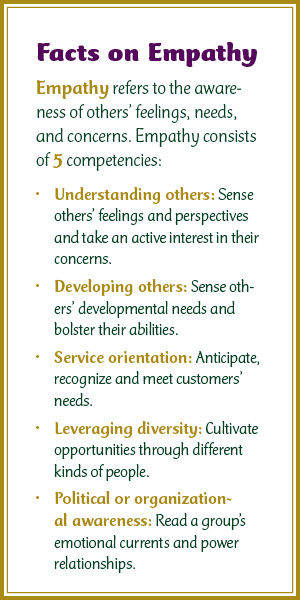
We’ve been exploring how understanding people’s primary love languages can help us develop stronger relationships in both our personal and professional lives. Now it’s time to examine those principles specifically in the context of the workplace.
For years, Dr. Gary Chapman had been wanting to apply the concepts developed in The 5 Love Languages to the workplace, but it wasn’t until he met psychologist and organizational consultant Dr. Paul E. White that he knew he’d found the right coauthor for this project. Their research culminated in The 5 Languages of Appreciation in the Workplace: Empowering Organizations by Encouraging People.
The Value of Appreciation
7 Habits of Highly Effective People author Steven Covey argues that psychological survival—feeling appreciated, understood, and affirmed—comes second only to physical survival in human needs.
Even so, employers who are myopically focused on the bottom line may not recognize the value of cultivating appreciation in the workplace. As we’ve repeatedly discussed in this blog, however, the recent wave of scientific research on happiness teaches us that investing in employee happiness, job satisfaction, and strengths yields higher profits and productivity, making this a win-win goal for everyone at the organization.
Why People Leave
A four-year study conducted by one of the leading exit interview firms reveals that managers could not be more wrong about the reasons employees leave. As many as 89% of managers believe employees leave their company for monetary reasons, but the fact is only 12% reported money as their cause of departure. A staggering 88% of employees said they left for other reasons—the number one cause being not feeling valued.
This is not an unusual phenomenon. Nearly 70% of US employees reported to Gallup that they receive no praise in the workplace. This lack of recognition creates a climate of discouragement and makes it difficult for organizations to retain quality employees.
According to research, employees favor recognition by supervisors over colleagues by a 2:1 margin. When that recognition is withheld, emotionally starved employees may start looking elsewhere for fulfillment.
The High Cost of Turnover
It is estimated that the cost of labor turnover on the US economy is $5 trillion a year. The loss of productivity, eroding morale, and time involved in hiring and training takes a hefty toll on an organization, especially when turnover is frequent. Far more cost-effective would be to invest in the people already there.
Managers’ Concerns
Employees who do not feel emotionally supported by their supervisors are far more likely to experience burnout. Employee turnover not only damages morale but also the financial health of the company.
In polling organizational leaders, White and Chapman discovered that managers’ five greatest concerns about employees are:
1) employees getting discouraged
2) employees experiencing burnout
3) employees feeling overwhelmed
4) the organization losing the positive culture built up over the years
5) managers not knowing how to encourage employees with limited financial resources
Developing an environment of appreciation helps combat all of these concerns.
Authenticity Is Key
Retaining your best employees begins with genuine, individual expressions of appreciation in the employee’s preferred language. Efforts to express appreciation must be specific to that person.
Authenticity is key. That’s why attempts to institute a companywide recognition policy often backfire—if expressions of gratitude are obligatory, employees will perceive those gestures as insincere, sparking resentment toward both their managers and the organization.
Culture of Appreciation
Establishing a culture of appreciation is a different story. By encouraging everyone at the company—supervisors and coworkers alike—to express gratitude and respect through the individual’s primary appreciation language, employers can boost job satisfaction and subsequently retention and productivity.
Stay Tuned
In our next post, we will examine the five languages of appreciation in detail: 1) words of affirmation, 2) quality time, 3) acts of service, 4) receiving gifts, and 5) physical touch. We will also share tips on how to gauge a fellow employee’s language of appreciation—and look at tools you can use to help cultivate a culture of appreciation at your workplace.
More Details
Visit the Appreciation at Work website for a list of resources, assessments, training tools, and videos on the research presented in The 5 Languages of Appreciation in the Workplace.





 If you are game to play along, here’s your assignment: choose a person and situation, and then experience what it is like to fully understand that person’s feelings, needs and how they are responding or reacting to a situation. Observe and sincerely attempt to understand their perspectives without judgment. This will require being present to the person, reflecting and practicing active and empathetic listening. Inquire how they are feeling and see how close you are to understanding what they are experiencing during the situation. Notice how this makes you feel and how the person responds to you.
If you are game to play along, here’s your assignment: choose a person and situation, and then experience what it is like to fully understand that person’s feelings, needs and how they are responding or reacting to a situation. Observe and sincerely attempt to understand their perspectives without judgment. This will require being present to the person, reflecting and practicing active and empathetic listening. Inquire how they are feeling and see how close you are to understanding what they are experiencing during the situation. Notice how this makes you feel and how the person responds to you.





